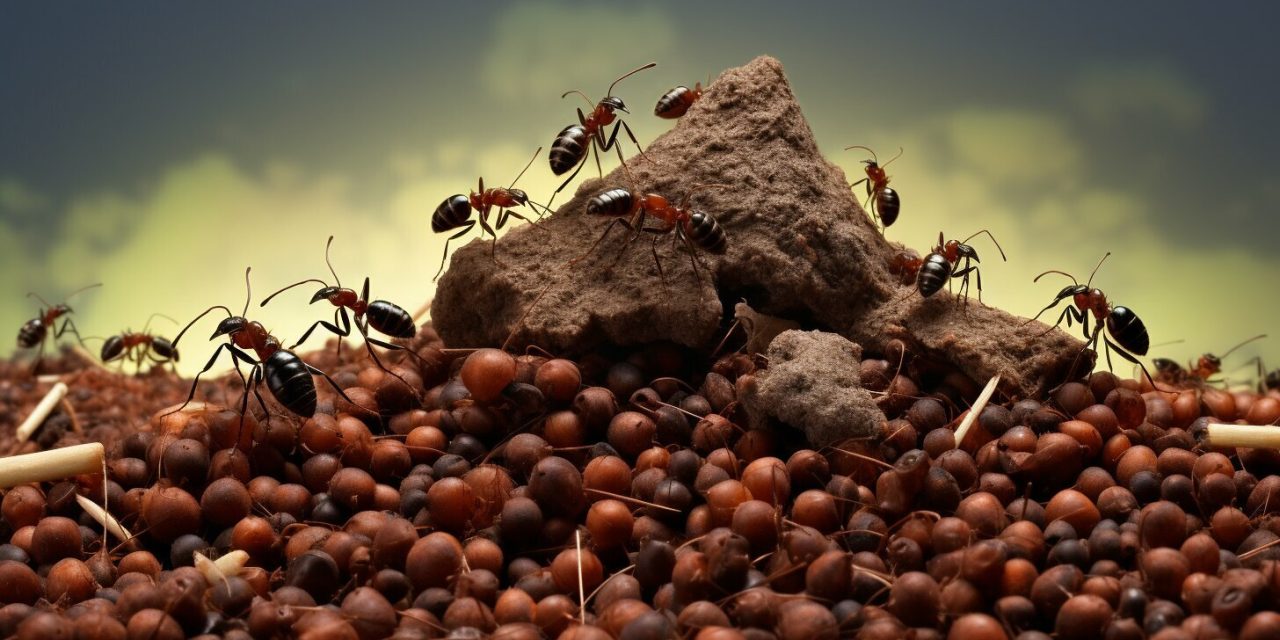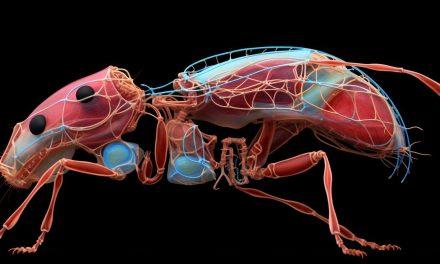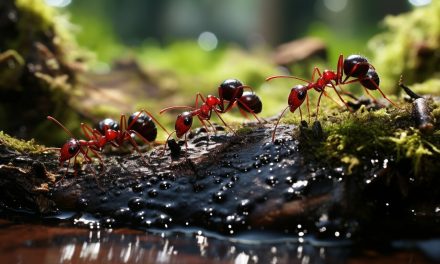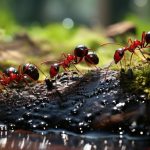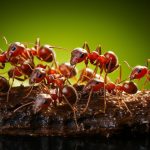This post may contain affiliate links.
Ants are fascinating creatures that play a vital role in the balance of ecosystems. Understanding ant mortality is key to understanding the delicate balance of nature, and the number of ants that die each day is an important factor in this equation.
Ants are one of the most abundant insects on the planet, with over 12,000 known species. They have an average lifespan of a few weeks to a few months, depending on the species. Ant mortality is affected by a variety of factors, including predation, disease, environmental conditions, and human activities.
So, how many ants die a day? The answer varies depending on the species, the environment, and other factors. However, experts estimate that billions of ants die each day around the world. This may seem like a lot, but it is important to remember that ant populations are constantly fluctuating, and daily ant deaths are a natural part of this process.
Key Takeaways:
- Understanding ant mortality is crucial to understanding the role of ants in ecosystems.
- Ant mortality is affected by a variety of factors, including predation, disease, environmental conditions, and human activities.
- Experts estimate that billions of ants die each day around the world, but this is a natural part of the process of maintaining population balance.
Understanding Ant Mortality
Ant mortality refers to the rate at which ants die in a given population. Understanding ant mortality is important for understanding the natural dynamics and balance of ecosystems. Ant survival rates vary depending on factors such as species, age, and environmental conditions.
Measuring ant mortality requires careful monitoring of ant populations over time. Researchers can determine ant mortality rates by counting the number of dead ants in a given area and comparing it to the total population size. Ant mortality statistics can provide valuable insights into the health and stability of ecosystems.
Factors Affecting Ant Survival Rates
Ant survival rates are influenced by a variety of factors, including predation, disease, competition for resources, and environmental conditions. In some cases, ant populations may experience sudden declines due to factors such as habitat destruction or pesticide use.
On the other hand, some species of ants are able to adapt and thrive in changing environments, demonstrating a high level of resilience and survival. Overall, the factors influencing ant mortality rates are complex and multifaceted, requiring ongoing research and analysis to fully understand.
Ant Life Expectancy
Ants are known for their impressive strength and unwavering work ethic, but have you ever wondered how long they live? The lifespan of ants can vary greatly by species, with some living for just a few months and others living for several years. For example, worker ants of the species Lasius niger have an average lifespan of 3-4 months, while queen ants of the same species can live up to 20 years.
Ant life expectancy is influenced by various factors, including genetics, environmental conditions, and social behaviors. For example, ant colonies that are well-protected from predators and have plenty of food and resources tend to have longer-lived members. Similarly, queen ants that are well-fed and cared for by worker ants can live for many years and lay thousands of eggs during their lifetime.
Despite their relatively short lifespans, ants play a crucial role in maintaining ecosystem balance. The daily deaths of ants contribute to the cycling of nutrients and the regulation of pest populations. Ants are also important for seed dispersal and for the pollination of some plant species.
As you can imagine, understanding the life expectancy of ants is key to understanding the dynamics of ant colonies and their impact on ecosystems. Researchers use various methods to study the lifespan of ants, including marking individuals and tracking their movements and behaviors over time. By studying the life expectancy of ants, scientists can gain valuable insights into the factors that influence ant populations and contribute to the number of ants that die each day.
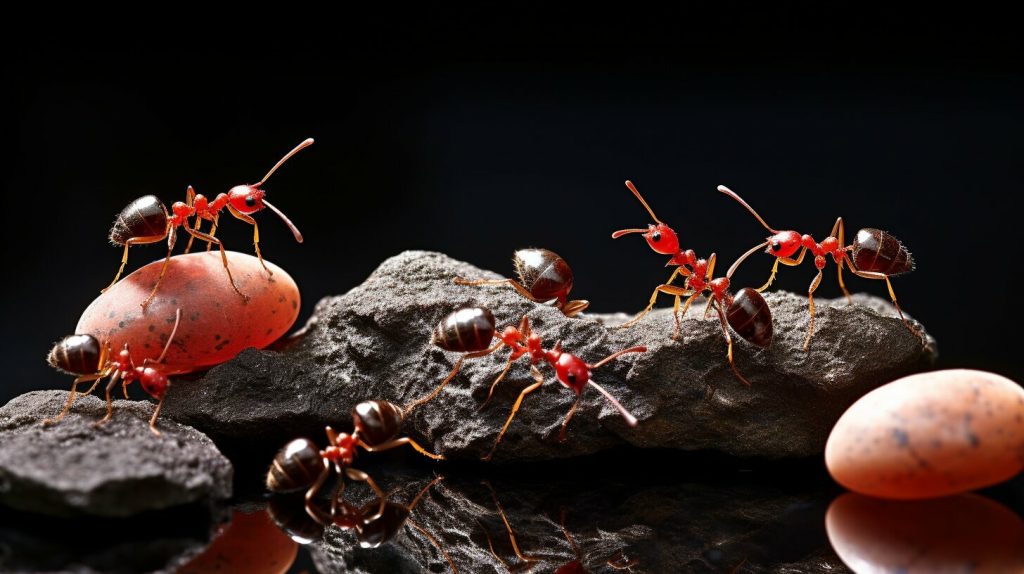
Next, we’ll explore how ant mortality rates and population dynamics fluctuate naturally and are influenced by factors such as climate change and human activities.
Ant Population Dynamics
Ant populations are not static and can experience natural fluctuations in size. Factors such as changes in food availability, predation, and disease outbreaks can impact ant populations over time. Additionally, competition among ant colonies for resources can contribute to population decline.
Despite these fluctuations, ant populations are generally able to maintain balance over time. Daily ant deaths play a role in regulating populations, as older ants die and are replaced by younger ones. This process helps to ensure that ant colonies remain healthy and able to fulfill their ecological roles.
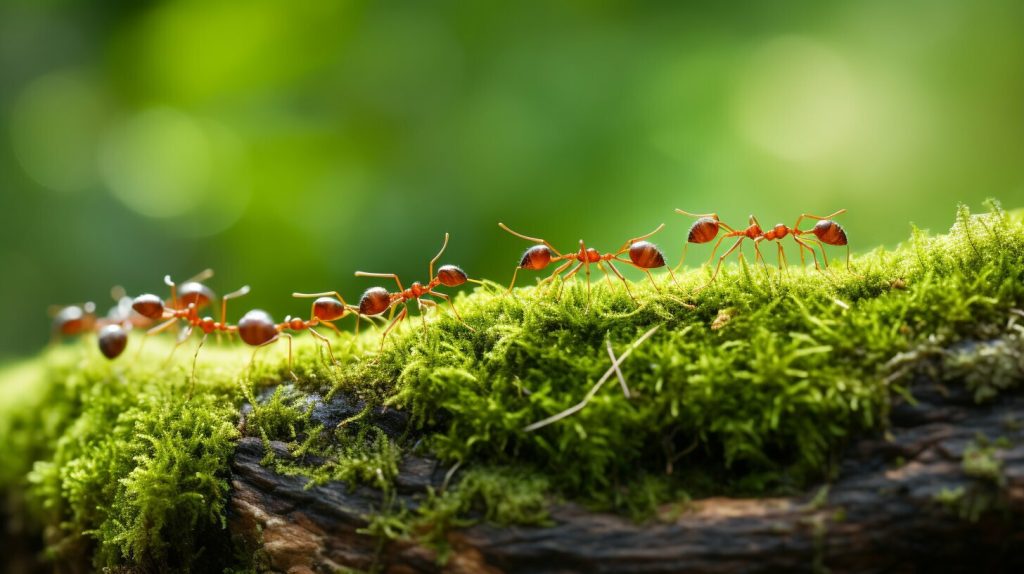
Research has shown that when ant populations decline, there can be significant impacts on ecosystem processes. For example, a decline in seed dispersal by ants can lead to a decrease in plant diversity. Similarly, a decrease in ant activity can cause an increase in pest populations, which in turn can impact other species and ecosystem functions.
It is important to understand the dynamics of ant populations and the factors that contribute to their decline in order to maintain healthy ecosystems. By supporting conservation efforts and taking steps to address factors such as habitat loss and climate change, we can work towards ensuring a more stable future for ant populations and the ecosystems they support.
Factors Influencing Ant Mortality:
Ant mortality rate is influenced by various factors that determine the number of ants dying each day. These include:
- Predation: Ants are preyed upon by numerous animals such as birds, lizards, and other insects. In their effort to protect their colonies, ants can also engage in fierce battles with rival ant colonies, further increasing mortality rates for both sides.
- Disease: Like humans and other animals, ants can fall ill due to various diseases caused by bacteria, viruses, and fungi. Infected ants can quickly spread diseases to other colony members, resulting in increased mortality rates.
- Environmental Conditions: Changes in temperature, humidity, and rainfall patterns can affect ant populations, with extreme weather conditions often leading to increased mortality rates.
- Human Activities: Human activities such as deforestation, pollution, and the use of pesticides can all impact ant populations and their mortality rates. This can have ripple effects on ecosystem functioning, as ants play a crucial role in many ecological processes.
To better understand ant mortality rates and how they are influenced by these factors, researchers use various methods such as field observations, experiments, and mathematical models. By studying ant mortality rates, scientists can gain insights into the complex dynamics of ecosystems and the key role played by ants in maintaining their balance.
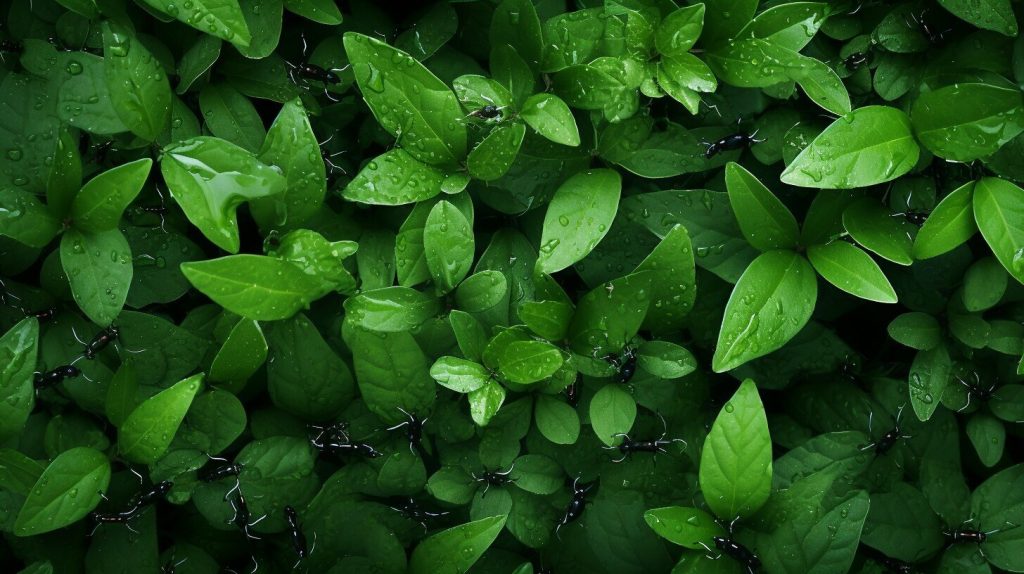
The Role of Ants in Ecosystems
Ants are often viewed as pests in our homes and gardens, but they play a crucial role in maintaining the balance of many ecosystems. From the forest floor to the treetops, ants are involved in a variety of ecosystem processes that have far-reaching effects.
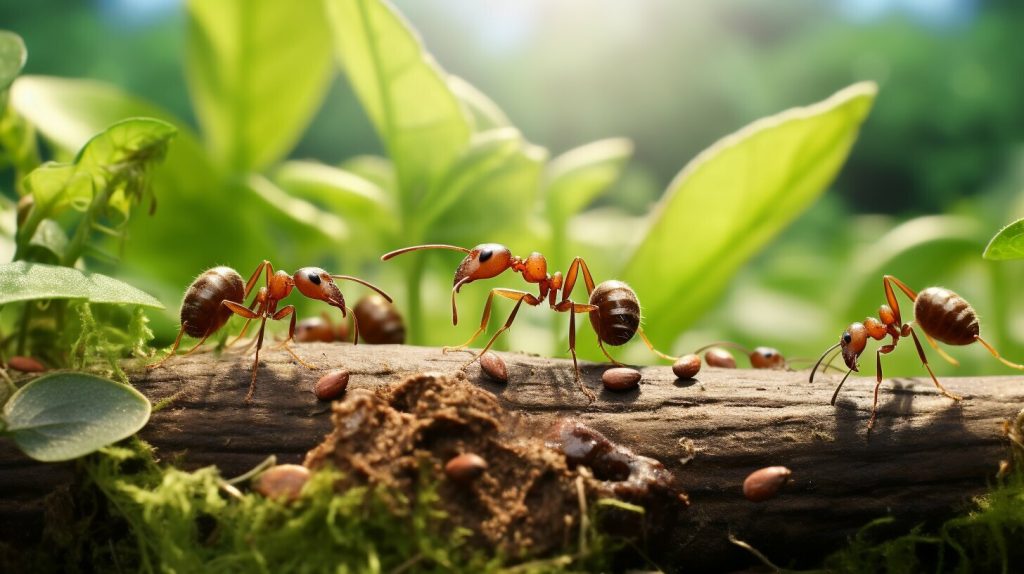
One of the most important roles of ants in ecosystems is nutrient cycling. Ants are known for their ability to break down and transport organic matter, such as dead insects and plant material, into the soil. As they forage for food, ants disturb the soil, creating channels for oxygen and water to penetrate. This enhances the soil’s fertility and allows plants to grow more efficiently.
Ants also play a key role in seed dispersal. They carry seeds back to their nests, where they are protected from predators and harsh environmental conditions. This increases the likelihood of successful germination and plant growth.
Additionally, ants are known for their pest control abilities. Some ant species are natural predators of other insects, such as aphids, which can be harmful to plants. By controlling the populations of these pests, ants help maintain the health of plant communities.
Overall, the impact of ants on ecosystems is vast and complex. Their daily activities contribute to the health and stability of many natural systems. Understanding ant mortality rates, and the factors that influence them, is essential for maintaining healthy ant populations and promoting ecosystem conservation.
Studying Ant Mortality
If you’re interested in learning more about ant mortality, there are several methods that researchers use to study it. For example, scientists can observe ant colonies in the wild or in a laboratory setting to gather data on ant mortality rates and survival rates.
One common approach is to mark individual ants with a unique tag or paint, then track their lifespan and cause of death over time. This method allows researchers to identify patterns in mortality and understand the factors that influence ant survival.
Another technique is to analyze ant burial sites to determine the number and types of ants that have died. By studying the composition of these burial sites, scientists can gain insights into ant population dynamics and mortality rates.
Several studies have shed light on ant mortality rates and the factors that influence them. For example, research has shown that ant mortality can be influenced by factors such as temperature, humidity, and access to food and water. Understanding these factors is critical to preserving healthy ant populations and promoting ecosystem stability.
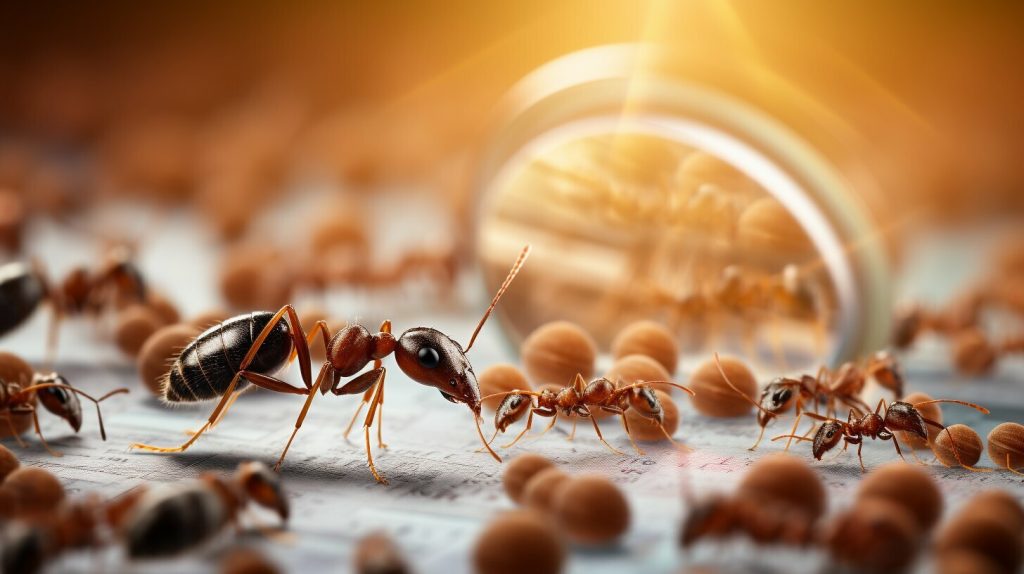
Ant Mortality and Climate Change
Climate change has the potential to significantly impact ant populations and their mortality rates. As temperatures rise and rainfall patterns change, ant habitats may become inhospitable or disrupted. This can lead to declines in ant populations and an increase in the number of ants dying each day.
A study published in Global Change Biology found that increased temperatures caused a decline in ant survival rates. The researchers suggest that this may be due to changes in foraging patterns or increased susceptibility to disease. Another study found that habitat fragmentation and loss due to climate change can lead to declines in ant populations and disrupt ecosystem processes.
As ant populations decline, the impact on ecosystems could be significant. Ants play an important role in nutrient cycling, seed dispersal, and pest control, among other ecosystem processes. A decline in ant populations could lead to imbalances in these processes, threatening the stability of ecosystems.
Efforts to address climate change and mitigate its impacts on ant populations are crucial for maintaining healthy ecosystems. This includes reducing greenhouse gas emissions, protecting natural habitats, and promoting sustainable land use practices.
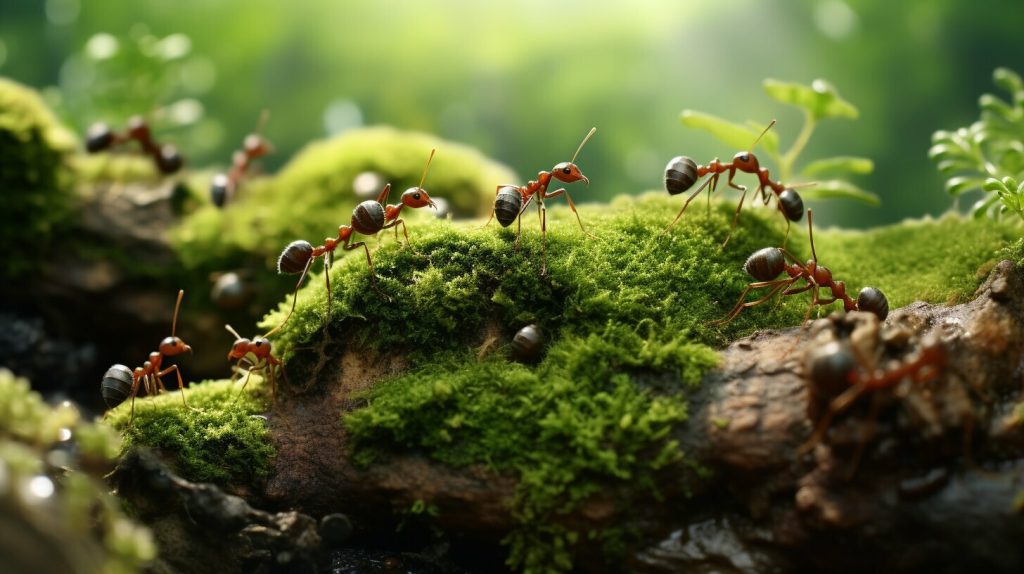
“Climate change has the potential to significantly impact ant populations and their mortality rates.”
Conservation and Ant Mortality
If you’re concerned about the welfare of ants, you’re not alone. People all over the world are working to protect these fascinating creatures and preserve their habitats. One of the biggest threats to ant populations is habitat loss due to human activities such as deforestation and urbanization. As ant populations decline, the effects can ripple throughout entire ecosystems, affecting plants and animals that rely on ants for pollination, seed dispersal, and pest control.
In addition to habitat loss, other factors that contribute to ant mortality include pesticide use, pollution, and climate change. These threats can be addressed through efforts to conserve ant habitats, reduce chemical use, and promote sustainable land use practices.
A key component of ant conservation efforts is research. Scientists study ant mortality rates and population dynamics to better understand the factors that influence ant survival and how to protect them. For example, researchers in Australia are using radio tracking technology to monitor ant populations and study their movements and behavior patterns.
Protecting ant habitats and promoting biodiversity can also have a positive impact on human well-being. Ants contribute to ecosystem services such as soil fertilization and pest control, which are essential for healthy agriculture and food production.
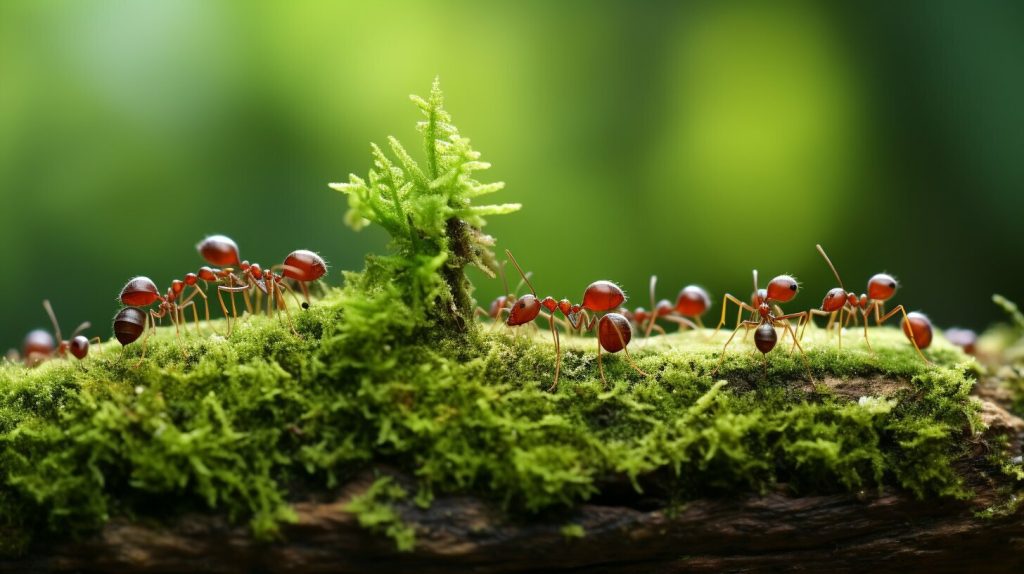
“Conserving ant populations is not just important for the ants themselves, but for the health and well-being of entire ecosystems.”
Balancing Ant Mortality and Ecosystem Stability
Ants play a crucial role in maintaining the balance of ecosystems. As we’ve explored in previous sections, the number of ants dying each day is a natural and necessary part of maintaining healthy ant populations and ecosystem processes. However, too much or too little ant mortality can disrupt this balance and negatively impact ecosystem functioning.
For example, if ant populations experience excessive mortality due to human activities such as pesticide use or habitat destruction, this can lead to a decline in ecosystem services such as nutrient cycling and pest control. On the other hand, if ant populations experience little mortality and are allowed to grow unchecked, this can lead to overgrazing, seed predation, and other negative impacts on ecosystem processes.
Therefore, it is important to recognize the delicate balance between ant mortality and ecosystem stability. Practicing sustainable land use practices and minimizing human impact on ant habitats can help maintain healthy ant populations and ecosystem balance.
Remember, ants are not just pests but integral members of ecosystems that contribute to their functioning. By understanding the importance of ant mortality in maintaining this balance, we can make informed decisions that support both ant populations and ecosystem health.
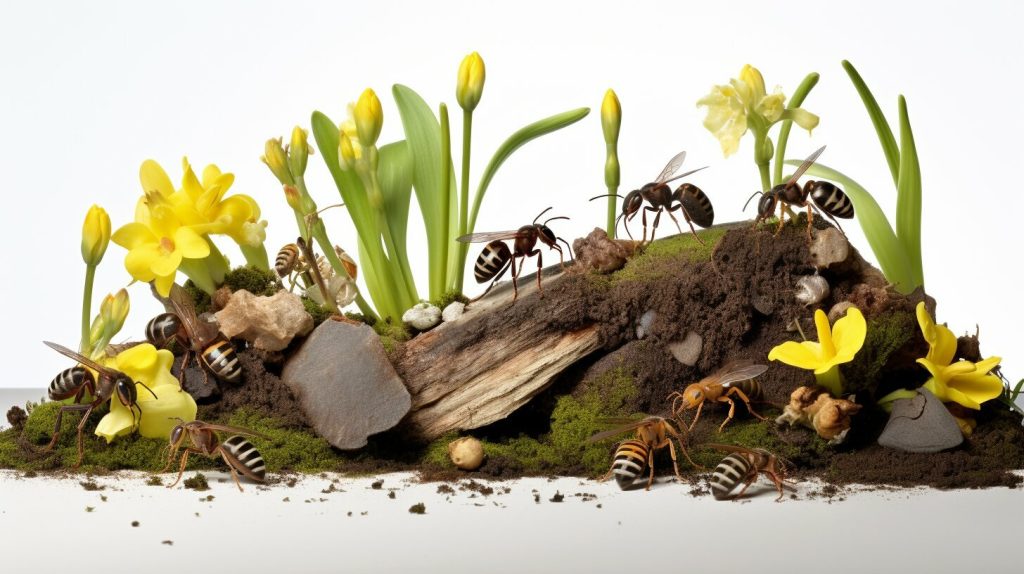
Ant Mortality and Human Perception
You may have never given much thought to the mortality of ants before, but understanding it can help you appreciate these tiny creatures even more. While ants may seem insignificant to some, they play a vital role in many cultures and in the natural world.
Ants have been featured in literature, fables, and art throughout history. In Aesop’s fables, ants were praised for their hard work and diligence. In many cultures, ants are considered sacred insects and are associated with fertility, luck, and prosperity.
But beyond their cultural significance, ants are also important in environmental education. Studying ant populations can help us understand their role in ecosystems and how to protect them. For example, ants are crucial in seed dispersal and nutrient cycling, which helps maintain the balance of ecosystems.
By understanding the mortality of ants, we can appreciate their value and take steps to protect them from threats such as habitat loss and climate change. At the same time, we can recognize that natural processes, including ant mortality, play an important role in maintaining ecosystem stability.
Conclusion
So, how many ants die a day? The answer is not a straightforward one, as ant mortality rates vary depending on a range of factors. However, by exploring the different elements that contribute to daily ant deaths, we can gain a deeper understanding of the delicate balance of ecosystem dynamics.
As we have seen, ants play a vital role in ecosystems, helping to regulate nutrient cycling, seed dispersal, and pest control. Their daily mortality is an essential part of maintaining the stability of ant populations and ensuring they can continue to fulfil these crucial ecosystem functions.
Moreover, ant mortality rates are also affected by human activities, such as habitat destruction, pesticide use, and climate change. As responsible stewards of the environment, we must take steps to conserve ant populations and address the factors that contribute to their decline.
Ultimately, the study of ant mortality highlights the interconnectedness of all living things and the importance of considering the bigger picture when it comes to environmental conservation. By taking a closer look at the fascinating world of ants and their daily deaths, we can learn to appreciate and protect the diversity of life that surrounds us.
Do Ants Experience Increased Mortality Rates in the Winter?
Do ants in winter mortality experience increased mortality rates compared to other seasons? While ants are known for their resilience, colder temperatures and limited food sources during winter can indeed result in higher mortality rates for certain ant species. Reduced foraging opportunities and the need to conserve energy often lead to decreased immunity and increased susceptibility to diseases and predators, contributing to higher ant mortality in winter.
FAQ
Q: How many ants die a day?
A: The exact number of ants that die each day can vary depending on several factors, including the size of the ant population and the species of ants. However, it is estimated that millions of ants die every day across the world.
Q: What factors affect ant survival rates?
A: Ant survival rates can be influenced by various factors, including predation, disease, environmental conditions, availability of food and water, and human activities. These factors can impact the number of ants that die each day.
Q: What is the average life expectancy of ants?
A: The average lifespan of ants can vary depending on the species. Some ant species have a lifespan of a few weeks, while others can live for several years. The life expectancy of ants contributes to the number of ants dying each day within a population.
Q: How do ant populations fluctuate?
A: Ant populations naturally experience fluctuations in size. Factors such as environmental conditions, availability of resources, and interactions with other species can impact ant population dynamics. Daily ant deaths play a role in maintaining population balance.
Q: What factors influence ant mortality?
A: Ant mortality can be influenced by several factors, including predation by other animals, exposure to diseases and parasites, changes in habitat and climate, and human activities such as pesticide use. These factors contribute to the number of ants dying each day.
Q: What is the role of ants in ecosystems?
A: Ants play a crucial role in ecosystems. They contribute to nutrient cycling, seed dispersal, and pest control. Ant mortality affects these ecosystem processes and can have broader impacts on the functioning and stability of ecosystems.
Q: How do researchers study ant mortality?
A: Researchers study ant mortality by conducting field observations, laboratory experiments, and data analysis. They may use methods such as mark-recapture studies, monitoring ant populations over time, and studying the effects of different factors on ant survival rates.
Q: How does climate change affect ant mortality?
A: Climate change can have significant impacts on ant mortality rates and population dynamics. Changes in temperature, rainfall patterns, and habitat loss can affect ant populations, leading to increased mortality rates and population decline.
Q: Why is conservation important for ant populations?
A: Conservation is crucial for maintaining healthy ant populations. Addressing factors that contribute to ant population decline, such as habitat loss and pesticide use, is important for preserving the ecological roles that ants play and ensuring the stability of ecosystems.
Q: How does ant mortality impact ecosystem stability?
A: Ant mortality is a natural process that helps regulate ant populations and maintain ecosystem stability. Excessive ant mortality or population growth can disrupt ecosystem functioning, highlighting the delicate balance between ant mortality and ecosystem stability.
Q: What is the human perception of ants?
A: Humans have varying perceptions of ants. They can be seen as pests in certain situations, but they also have cultural and ecological significance. Understanding ant mortality and their role in ecosystems can enhance our appreciation and knowledge of these fascinating creatures.

